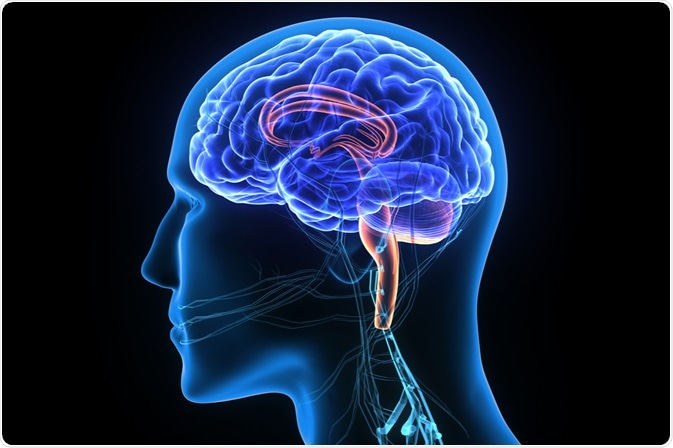Tay-Sachs Disease is a progressive and fatal genetic condition that involves a complete deficiency of the hexosaminidase-A (HEXA) enzyme. This enzyme is needed in healthy individuals for the process of hydrolysis of GM2 ganglioside to occur. For individuals with Tay-Sachs disease that lack this enzyme, the fatty substance of GM2 ganglioside accumulates in the brain and leads to the symptoms of the disease.

Image Credit: Life science / Shutterstock
Role of Hexosaminidase-A
The hydrolytic HEXA enzyme usually plays an essential role in the process to break down glycolipids in the lysosomes. Alongside other enzymes, it is responsible for the breakdown of specific fatty acid derivatives known as gangliosides.
There are three proteins required for the hydrolysis of GM2-gangliosides: the alpha and beta subunits of hexosaminidase, and the GM2 activator protein required as a cofactor for the enzymes. It is the absence of the alpha subunit, known as HEXA, that plays a particularly important role in the pathophysiology of Tay-Sachs disease.
Result in Absence of Functioning Hexosaminidase A
In the early stages of life as the brain develops, gangliosides are naturally produced and biodegraded at a fast rate. In the absence of the HEXA enzyme, the natural hydrolysis reaction of the gangliosides cannot occur as normal. This can lead to an accumulation of the lipids in the brain, central nervous system and the retina of the eyes.
The build-up of gangliosides in the neurons disrupts the normal physiological processes and leads to the presentation of symptoms of Tay-Sachs disease. The signs and symptoms of the disease may include:
- Visible red dot near the retina of the eye
- Disrupted or loss of vision
- Increased startle response
- Delayed learning development
- Muscular abnormalities
- Seizures and paralysis
Progression of Disease
Most patients with Tay-Sachs disease tend to display the first signs at the age of approximately six months. While the initial signs may be misdiagnosed as other conditions, the disease generally progresses quickly due to the complete absence of HEXA. Patients diagnosed with the disease in infancy typically have a life expectancy of approximately four years, with severe infections the most common cause of death.
Patients that are diagnosed with the disease later in life, in childhood or early adulthood, are associated with a better prognosis. Those that are diagnosed when they are adults are not usually subject to fatal complications and usually have a normal life expectancy with a poorer quality of life due to associated symptoms.
Genetic Inheritance
Each individual has two copies of the HEXA gene that is responsible for Tay-Sachs disease. Both copies of the gene, one inherited from each parent, must be defected in order for a child to suffer from the disease. This is known as a recessive pattern of inheritance.
An individual with one healthy HEXA gene and one HEXA gene with a mutation, they are known as a carrier. Genetic carriers are not symptomatic and lead relatively normal lives, although they may pass the defected gene on to any children, who may suffer from the disease if their partner is also a carrier.
If both parents are carriers of the HEXA gene defect, all children will have a:
- 25% chance of inheriting two mutated genes and suffering from Tay-Sachs disease
- 50% chance of inheriting one copy of the gene and being a carrier
- 25% chance of inheriting two healthy genes and being unaffected
References
Further Reading